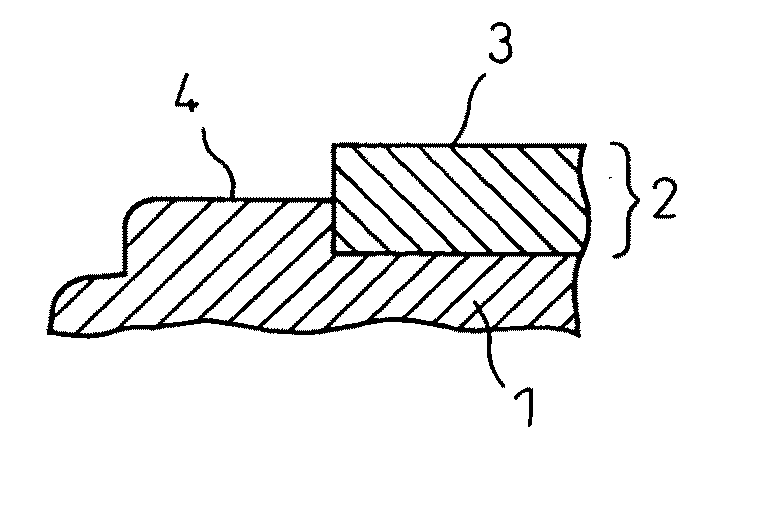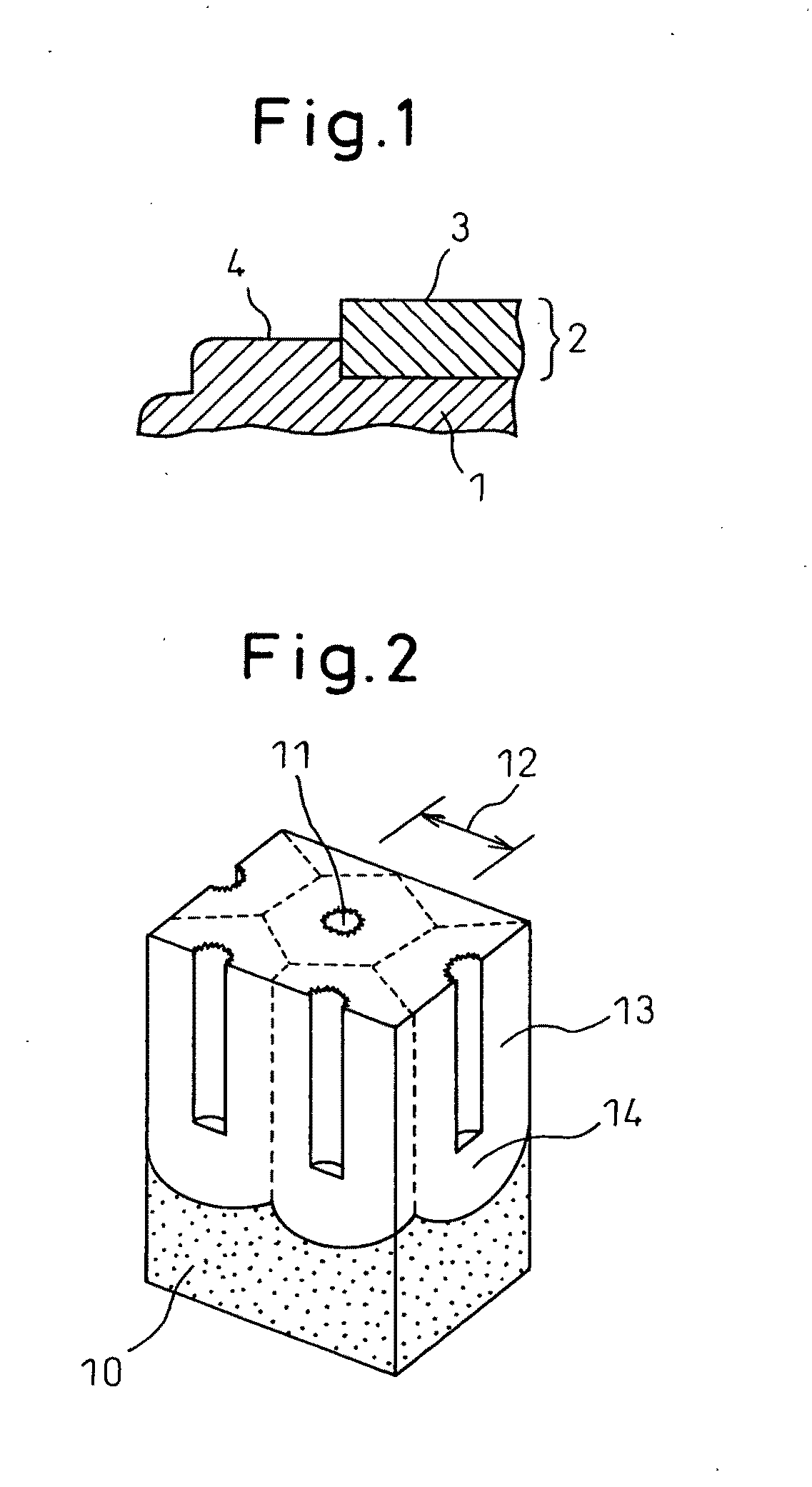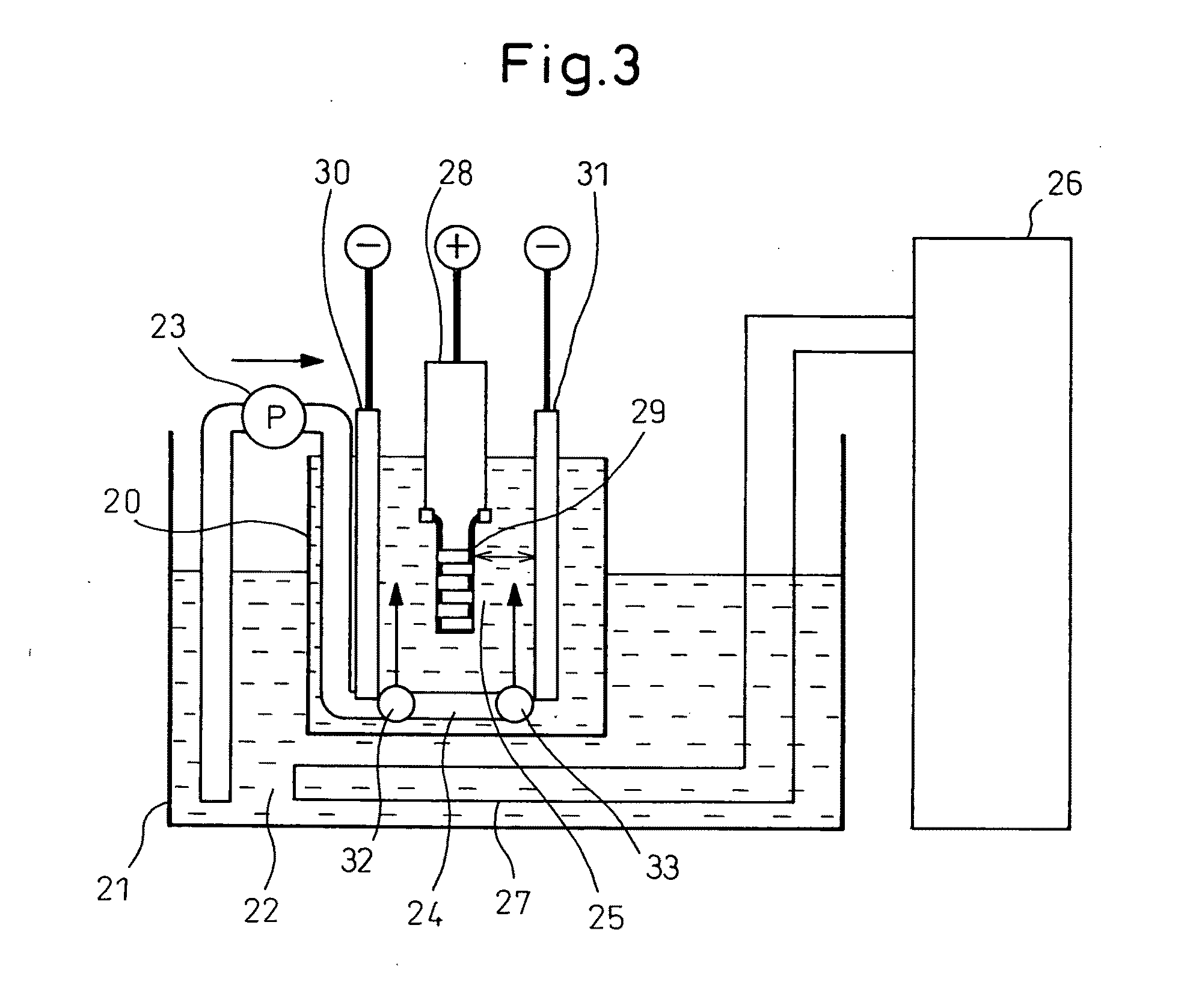Method for anodizing aluminum and anodized aluminum
- Summary
- Abstract
- Description
- Claims
- Application Information
AI Technical Summary
Benefits of technology
Problems solved by technology
Method used
Image
Examples
examples
[0071]Hereinafter, the present invention will be described in detail with reference to examples, but is not limited there to.
[0072]Anodized Aluminum Treatment Device
[0073]The following examples, comparative examples and reference examples were obtained, using an anodized aluminum treatment device shown in FIG. 3. In the anodized aluminum treatment device shown in. FIG. 3, an anodized aluminum treatment tub 20 (the inner shape in a horizontal sectional view is rectangular; and the surface area of the inner horizontal section is 100 cm2) is provided within a thermostatic bath 21 wherein an electrolytic solution 22 is pumped up at a desired flow rate (approximately 3 L / min, or less than 3 L / min, as necessary) by a pump 23, and ejected upward from the bottom part of the anodized aluminum tub 20 through openings 32, 33 of a pipe 24, and rises in the anodized aluminum tub 20 (the average rise speed of the electrolytic solution 25 on the outer surface side of the object 29 is approximately...
reference examples 1 to 6
[0081]Using the anodized aluminum treatment device shown in FIG. 3, an object 29 having a cylindrical shape (outer diameter was 18 mm; inner diameter was 9.5 mm; and length was 55 mm), made of an aluminum alloy comprising aluminum of 80.7 to 88.9% by weight and silica of 9.6 to 12.0% by weight, was anodized in an electrolytic solution containing oxalic acid ((COOH)2.2H2O)) at a concentration of 50 g / L (i.e., (COOH)2 of 36 g / L) and dissolved Al3+ at a concentration of 1 g / L or less, at an initial temperature of the outer surface of the object 29 of 26° C. (terminal temperature of 80° C. or less) and at a current density of 10 A / dm2. The flow rate of the solution fed by the pump 23 was 0 L / min (average rise speed of the electrolytic solution 25 on the outer surface side of the object 29 was approximately 0 cm / sec) (Reference Example 1), 2 L / min (average rise speed of the electrolytic solution 25 was approximately 0.3 cm / sec) (Reference Example 2), 3 L / min (average rise speed of the el...
examples 1 to 6 and reference examples 6 and 7
[0084]Using the anodized aluminum treatment device shown in FIG. 3, an object 29 having a cylindrical shape (outer diameter was 18 mm, inner diameter was 9.5 mm, and length was 55 mm), made of an aluminum alloy comprising aluminum of 80.7 to 88.9% by weight and silica of 9.6 to 12.0% by weight, was anodized in an electrolytic solution containing oxalic acid ((COOH)2.2H2O)) at a concentration of 50 g / L (i.e., (COOH)2 of 36 g / L) and dissolved Al3+ at a concentration of 1 g / L or less, at an initial temperature of the outer surface of the object 29 of 26° C. (an terminal temperature of 80° C. or less), at a flow rate of 3 L / min by a pump 23 (i.e., an average rise speed of the electrolytic solution 25 on the outer surface side of the object 29 was approximately 0.5 cm / sec) at a current density of 1 A / dm2 (Comparative Example 6), 10 A / dm2 (Comparative Example 7), 40 A / dm2 (Example 1), 60 A / dm2 (Example 2), 80 A / dm2 (Example 3), 100 A / dm2 (Example 4), 120 A / dm2 (Example 5) and 150 A / dm2 (E...
PUM
| Property | Measurement | Unit |
|---|---|---|
| Temperature | aaaaa | aaaaa |
| Length | aaaaa | aaaaa |
| Length | aaaaa | aaaaa |
Abstract
Description
Claims
Application Information
 Login to View More
Login to View More - R&D
- Intellectual Property
- Life Sciences
- Materials
- Tech Scout
- Unparalleled Data Quality
- Higher Quality Content
- 60% Fewer Hallucinations
Browse by: Latest US Patents, China's latest patents, Technical Efficacy Thesaurus, Application Domain, Technology Topic, Popular Technical Reports.
© 2025 PatSnap. All rights reserved.Legal|Privacy policy|Modern Slavery Act Transparency Statement|Sitemap|About US| Contact US: help@patsnap.com



